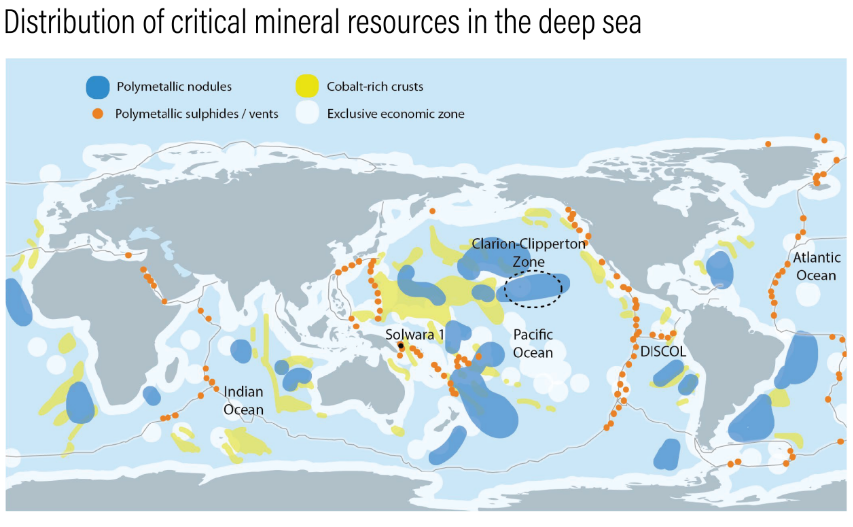Recently International Sea Bed authority elected new chief and held discussion on international moratorium on extraction of deep sea metals until clear research on their impacts.
The high seas are defined by international law as all parts of the ocean that aren't included in the exclusive economic zone, the territorial sea, or the internal waters of a country, or in the archipelagic waters of an archipelagic country.

|
Deep Sea Mining |
|
To know more about deep sea mining, click here.
Benthic Organisms include animals that live on the sea floor are called benthos. Most of these animals lack a backbone and are called invertebrates. Eg. sea anemones, sponges, corals, sea stars, sea urchins, worms, bivalves, crab.
The United Nations Environment Programme (UNEP) emphasizes the need for a comprehensive assessment of the environmental impacts of deep-sea mining. To date, researchers have explored only around 1% of the deep sea area and it’s potential.